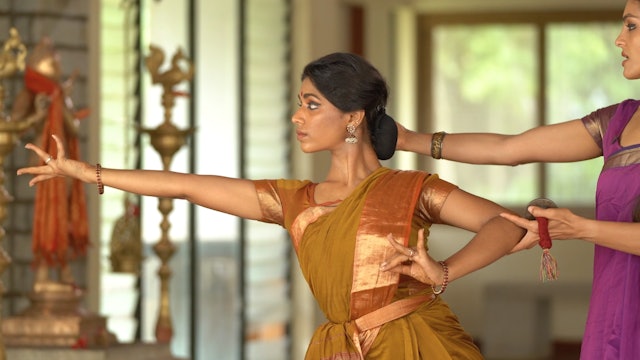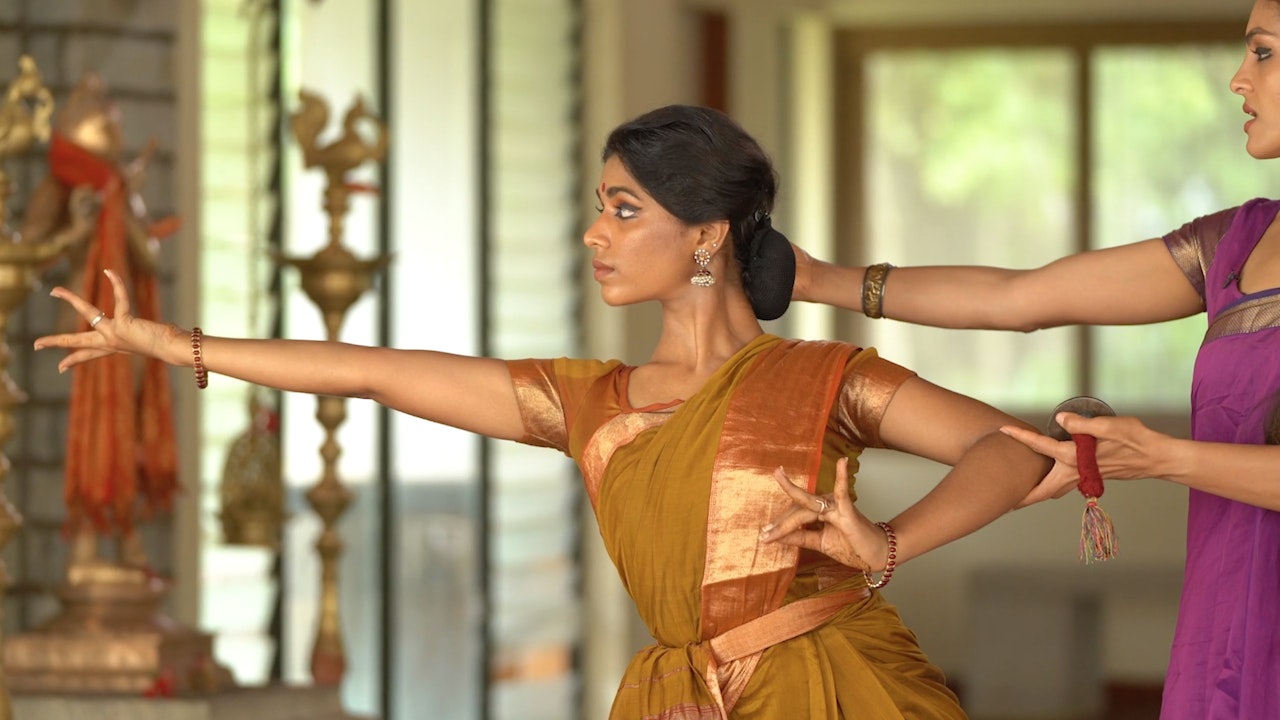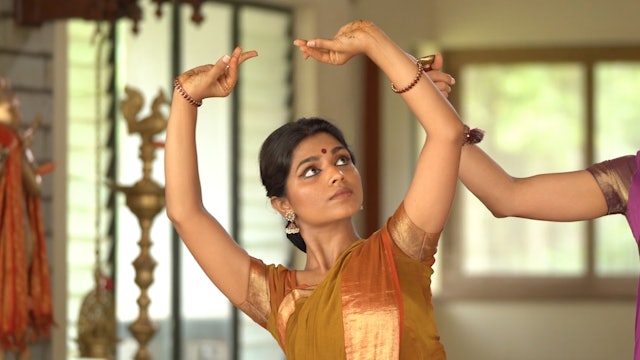Adavus : Instructions
3 Seasons
Adavus are the essentials of the practice of Bharatanatyam. They are the basic unit of movement They can be compared to words of a vocabulary. Adavus are a combination of Abhinaya hastas, Sthanakas and feet articulation with the floor, causing movement. They have a beginning and an end and extensively use the Araimandi and Muzhumandi positions in combination with the Aalidam, Pratyalidam and Vaishaka Sthanas.
We recommend that the student watches the instructions for the Aduvus, before commencing the practice of each Adavu set for at least a period of 5 to 6 months.
-
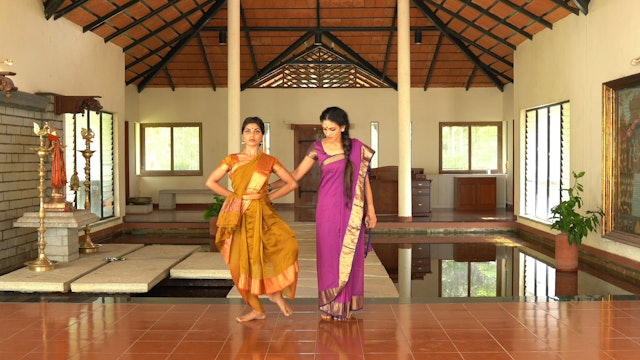 02:19Episode 1
02:19Episode 1Thattadavu
Episode 1
"Thattu" , means to strike. Thattaduvu literally is just striking the floor while mantaining a "mandala" or Araimandi position. There are different rhythmic combinations of striking used to build rhythmic coherence in the student while developing strength in the legs.
-
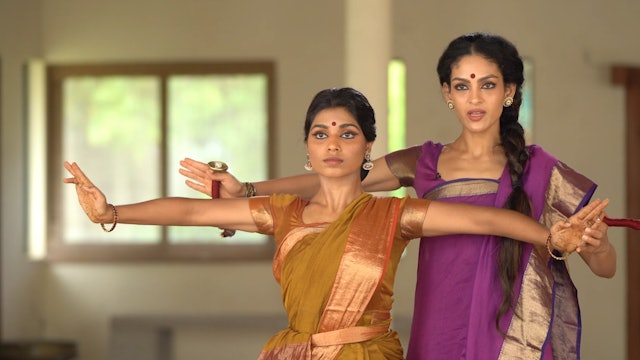 04:36Episode 2
04:36Episode 2Naatadavu part 1
Episode 2
"Naatu", means to stretch. The Naataduvus stretch either one of the legs at the knee, while the foot is in Anchitam. (flexed position) There are many different varieties of Naataduvus. They vary based on the choices made in torso movement and direction of stretch and arm positions.
-
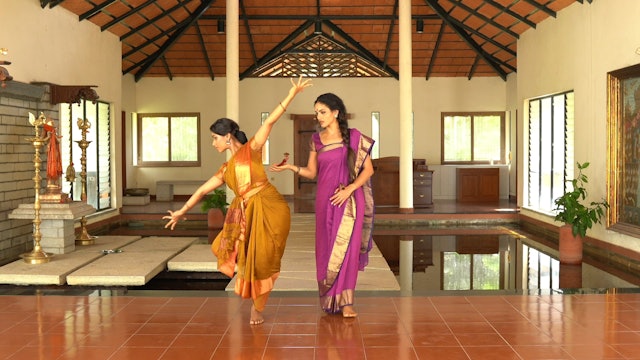 03:20Episode 3
03:20Episode 3Naatadavu part 2
Episode 3
This is a continuation of Naataduvu Part 1. It deals with a few more varieties of Naataduvus
-
Pakkadavu
Episode 4
The feet articulation vary in varieties of Pakkadavus. The arms can also be changed and expand to include a number of different types. The Raadha Kalpa method has chosen a specific combination of feet articulation and arm movement to allow the dancer to be able to adapt and vary in choreography a...
-
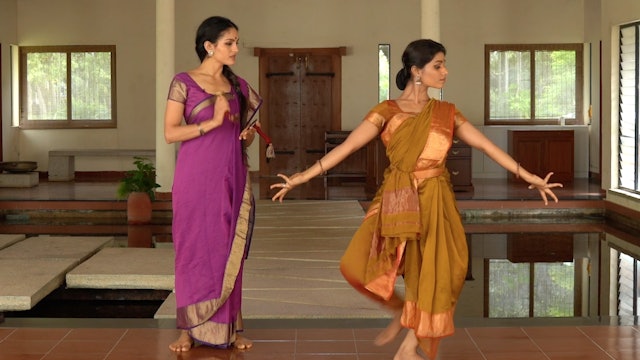 05:05Episode 5
05:05Episode 5Paraval adavu
Episode 5
The Paraval adavu moves to the side, like the Pakkadavu, but the srea covered is expansive. The articulation of the feet changes. There are many varieties in this adavu. Although Paraval serves as an umbrella classification, sometimes we call the adavus by varied names based on how the feet inter...
-
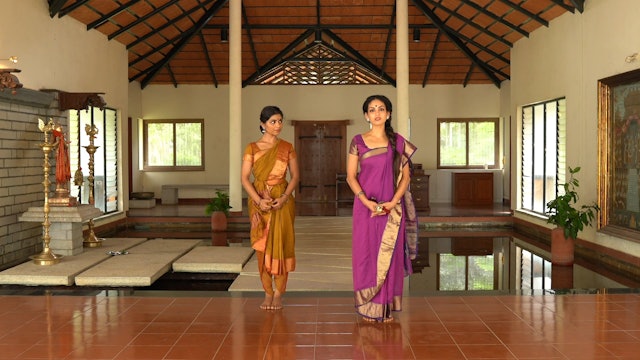 02:35Episode 6
02:35Episode 6Kuditta Mettadvau
Episode 6
As mentioned in the Tattu mettaduvu, 'mettu' is a movement that comprises of a heel drop. Kuditta Mettaduvu or Yegar Mettaduvu, has a small jump onto the balls of the feet and then a drop of the heels. This Adavu is varied primarily with arm and torso movements. It is one of the only Adavus that ...
-
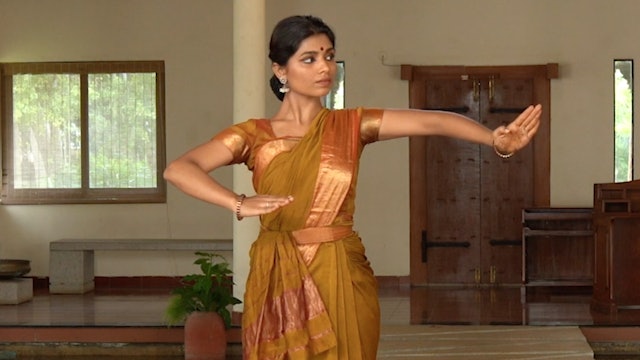 06:32Episode 7
06:32Episode 7Jaar Adavu/ Sarikal Adavu
Episode 7
The adavus in this category span a variety of feet articulations. The slide sometime occurs on the whole bottom of the foot. Sometimes in the ball of the foot, and other times on the heel, depending on the choice of the choreographer. These adavus can also vary greatly in levels and leg positions...
-
 05:02Episode 8
05:02Episode 8Thattu Mettadavu
Episode 8
Mettu, is a word that is used to describe the Udgattitam movement that is present in the Natyashastra. The Udgattitam, comprises of a movement that lifts and strikes the heel to the floor, while the ball of the foot remains in contact with the floor. Tattu mettaduvu is performed in Bharatanatyam ...
-
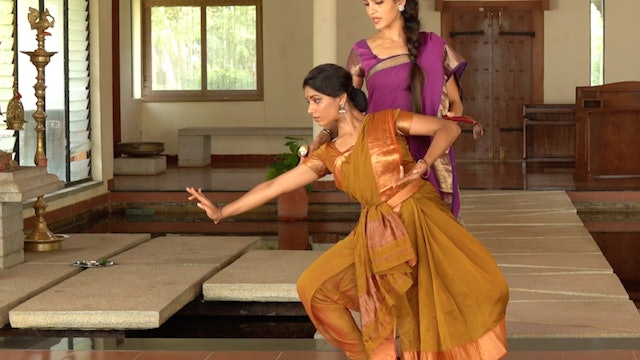 04:23Episode 9
04:23Episode 9Kuditta Thattadavu
Episode 9
This Adavu is referred to as the "Ta tai ta ha adavu" by some people. It is also called the Yegar Thattadavu. 'Yegar' and 'Kuditta', both mean jump. There is a small jump/ snatch onto the balls of the feet and then a strike. The first series will address the basic Kuditta tattaduvu. The many vari...
-
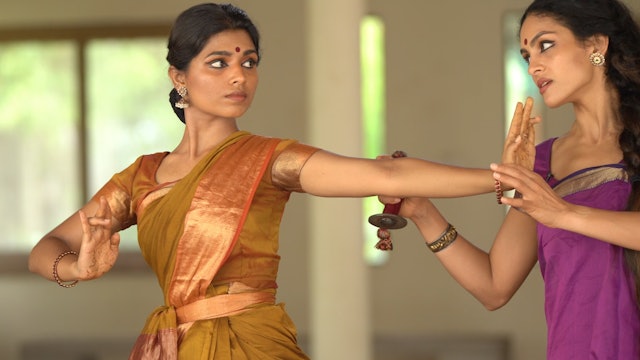 05:41Episode 10
05:41Episode 10Theermana adavu/ Makutadavu
Episode 10
Theermana, or Makuta literally refers to something that ends a sequence. These adavus are placed at the end of a Korwai or Jathi to complete it. They are done in a variety of talas and even the torso moves differently in the many varieties. We will deal with two primary varieties of this Adavu th...
-
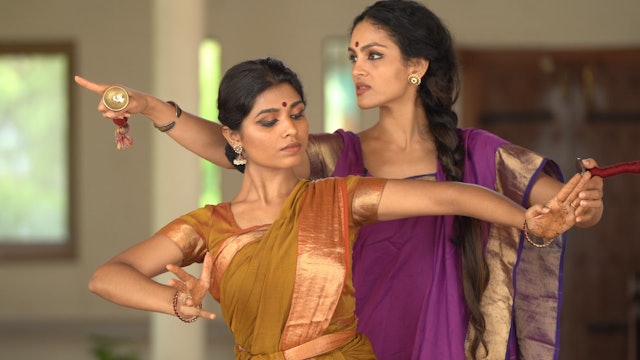 03:32Episode 11
03:32Episode 11'Ta hata jumtari ta' Adavu: Instructions
Episode 11
The "Ta hata jumtari ta" Adavu, is named after the syllables that are used in the practice of the Adavu. This practise is common amongst most lineages of Bharatanatyam.
The Adavu is a combination of various movements. It has the 'di, di tai" action with the Tattu and Naatu, from the Muktaya ada...
